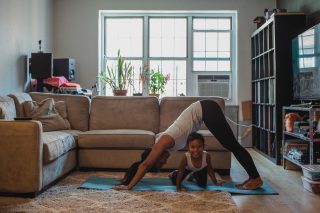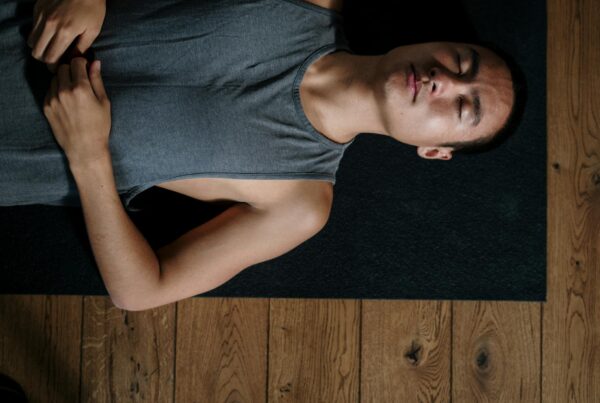The past year has changed many things about the workday for many working professionals and affected our exercise routine. Instead of commuting to the office, we walk into our studies or bedroom-turned-home offices to log on for the day. Instead of walking into a conference room with our coworkers for a meeting, we mute ourselves on Zoom and watch a screen-share presentation.
One of the biggest changes that has been introduced to our lives due to work from home is the reduction in physical activity done on a daily basis. No longer can you use your in-office standing desk or rush around the building from meeting to meeting. You can’t even take a quick walk down the block to a local coffee shop. All activities must be done on our own terms. The fact is that if we aren’t careful, the hours of 9 to 5 can quickly pass without having gone outside or stretching your legs once.
The rise in sedentary behavior
Experts are also hoping to see a rise in sedentary behavior for these reasons. This could lead to some formidable health concerns down the road, like heart disease. The average office worker is getting far less daily activity than they would on a typical day at the office. That said, it’s clear that staying active while working from home can keep us healthy and happy while we’re logging in remotely.

Photo by Kamaji Ogino from Pexels
That’s why it’s more important than ever to implement heart-healthy exercises into your workday that get your blood pumping and help you stay active. Workouts like walking, yoga or jogging are easy ways to get some aerobic activity in during the workday. They can often be done during a lunch break. They can also be done when you just need to step away from your desk during a particularly slow day.
Perhaps you don’t have time during the day to take a stroll around your neighborhood. Or maybe you have other responsibilities that prevent you from exercising after you’ve logged off for the day. If that’s the case, never fear. There are many exercises that you can do right from your desk while you complete your responsibilities for the day.
How to Stay Heart-Healthy While Working From Home
There are a variety of exercises you can do. This depends on what muscle group or activity area you want to target. This includes resistance training, generalized stretching, and aerobic exercise. Each of these heart-healthy exercises can be performed from your desk or desk chair, and most don’t require any other equipment other than yourself and a can-do mentality!
Resistance Training Exercises
Resistance training is a great way to build muscle. Additionally, it can also lower bad cholesterol levels when paired with other types of aerobic exercise (more on that later). Fortunately, adding resistance training to your workout schedule a few times a week doesn’t have to involve weights or a gym. In fact, the same results can be achieved through bodyweight exercises right from your desk. If you have them, adding in small weights or resistance bands can heighten the intensity of the workout, and help you achieve greater results.
The Department of Health and Human Services Physical Activity Guidelines recommend that adults perform muscle-strengthening exercises like resistance training two or three times per week. They also emphasize the importance of letting your muscles recover for at least one day (preferably two) between sessions.
One resistance training exercise that can be performed from your desk are desk dips. This is great when you need a break from sitting in your desk chair and typing away.
Another easy resistance training exercise is leg raises — this can even be done during a meeting!
Stretching

Koldunov/Shutterstock
It’s no secret that sitting in a desk chair all day can leave you feeling stiff, including a stiff upper or lower back, and even hand cramps if you spend all day with your hands poised over your keyboard or computer mouse. Adding in some gentle stretches throughout your work day can help alleviate some of these symptoms (especially the dreaded “tech-neck” from hunching over a laptop or tablet) caused by sitting at a desk all day with poor posture, as well as speed up recovery time between other exercise sessions.
To stay limber, incorporate a neck stretch into your workday. If you’re forgetful, you can set a timer to do some stretching once every three or four hours to give you a small break and something to look forward to. Another effective stretch that can be completed from your desk chair is the torso twist.
Both of these poses take less than a minute each. They can be performed throughout the workday to improve your posture. It will also keep you from feeling stiff when 5:00 rolls around.
Aerobic Exercise
Aerobic exercise can lower your blood pressure over time and get your heart pumping even on days that are chock-full of meetings. These exercises typically involve activities like running, walking, or biking. That said, there are multiple alternatives that you can do from home if your day is simply too busy to tear yourself away from for too long.
One simple aerobic exercise that everyone is familiar with is jumping jacks. If you have a quick break between meetings or simply need to move your body fast, jumping jacks are a great, low-impact way to get your blood pumping quickly.
The bottom line
While the past year and full-time work from home have affected many parts of our daily lives, exercise and physical activity don’t have to be one of those parts. There are many other ways to incorporate exercises and stretches into your daily routine. Many of these workouts can even be completed from the comfort of your desk chair or done while you tune into a meeting that, let’s face it, could have been a meeting. Check out the visual below for more ways to stay fit, active, and heart-healthy while you work from home.
Graphic provided by everlywell.com.




![women [longevity live]](https://longevitylive.com/wp-content/uploads/2020/01/photo-of-women-walking-down-the-street-1116984-100x100.jpg)










